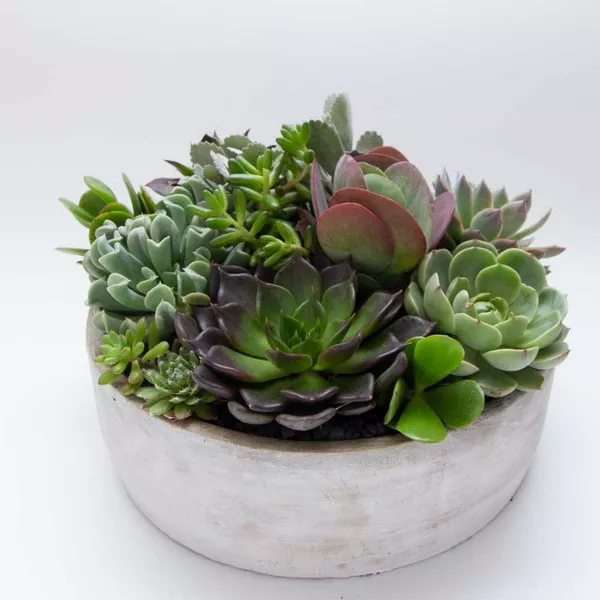Succulents have captivated the hearts of plant enthusiasts with their unique shapes and ability to thrive in arid conditions. One of the keys to successfully growing and maintaining healthy succulents is proper watering. While succulents are known for their water storage abilities, it is important to understand the right techniques and tools to use when watering them. This article provides a comprehensive guide to watering succulents, highlighting best practices to ensure their vitality and longevity.
Understanding Succulent Watering Needs
Succulents are native to regions with low rainfall and are adapted to store water in their leaves, stems, or roots. Their ability to retain water allows them to survive in arid conditions. However, this does not mean succulents can thrive without any water. Finding the right balance is crucial.
Overwatering is one of the most common causes of succulent problems, such as root rot or leaf discoloration. Succulents are susceptible to moisture-related issues because their roots can easily become overwhelmed with excess water. On the other hand, underwatering can cause succulents to become dehydrated and lead to stunted growth or leaf drop.
Best Practices for Watering Succulents
To provide optimal care for your succulents, follow these best practices for watering:
Observe the Signs of Thirst: Before watering your succulents, observe the signs that indicate they need water. These signs include wrinkling or shriveling of the leaves, a slightly deflated appearance, or the soil becoming completely dry. It is important to note that different succulent species have varying water needs, so observe the specific characteristics of your plants.
Use the “Soak and Dry” Method: The “soak and dry” method is a watering technique commonly recommended for succulents. It involves thoroughly saturating the soil and allowing it to dry out completely before watering again. This method mimics the natural rainfall patterns in succulent habitats, where they experience infrequent but heavy rainfall followed by dry periods. When watering, make sure the water reaches the root zone rather than just wetting the surface.
Water the Soil, Not the Leaves: When watering succulents, it is crucial to direct the water to the soil rather than spraying or misting the leaves. Wet leaves can increase the risk of fungal diseases and other issues. Water at the base of the plant, aiming for the soil around the roots.
Ensure Proper Drainage: Succulents require well-draining soil to prevent waterlogged roots. Use a well-draining soil mix specifically formulated for succulents or create your own by adding materials like perlite, coarse sand, or pumice to regular potting soil. Make sure the pots have drainage holes to allow excess water to escape.
Watering Frequency: The frequency of watering succulents depends on various factors such as climate, season, container size, and soil mix. As a general guideline, it is better to underwater than overwater. Succulents generally prefer to dry out between waterings. Depending on the conditions, watering once every 1-2 weeks may be sufficient. However, always rely on visual cues and the moisture level of the soil to determine when to water.
Consider the Season: Succulents may have different watering needs during different seasons. In the summer, when temperatures are higher and evaporation rates increase, succulents may require more frequent watering. During the winter or dormant period, succulents generally need less water due to reduced growth.
Tools for Watering Succulents
Using the right tools can make the process of watering succulents more effective and efficient. Here are some tools that can be useful:
Watering Can with a Narrow Spout: A watering can with a narrow spout allows for precise watering, directing the water to the base of the plant. This helps prevent excessive water on the leaves and allows the water to reach the root zone effectively.
Mister or Spray Bottle: While it is not ideal to wet the leaves of succulents, a mister or spray bottle can be handy for introducing moisture in small amounts. This is particularly useful when propagating succulents from leaves or when providing extra humidity for certain species.
Squeeze Bottle or Syringe: For small succulents or those planted in tight spaces, a squeeze bottle or syringe can be used to deliver water directly to the soil without disturbing the plant or neighboring succulents.
Watering Wand or Hose Nozzle: If you have outdoor succulents or larger containers, a watering wand or hose nozzle with a gentle spray setting can help provide a controlled and even distribution of water.
Self-Watering Systems: Self-watering systems or specialized pots with reservoirs can be beneficial for succulents, especially when you need to be away for an extended period. These systems provide a controlled and consistent water supply, reducing the risk of overwatering.
Conclusion
Proper watering is crucial for maintaining the health and vitality of succulents. By understanding their watering needs, following best practices such as the “soak and dry” method, and using appropriate tools, you can ensure the well-being of your succulents. Remember to observe signs of thirst, provide well-draining soil, water at the base of the plant, and adjust watering frequency based on the season and specific requirements of your succulent species. With the right watering practices, your succulents will thrive and bring beauty to your indoor or outdoor space for years to come.


